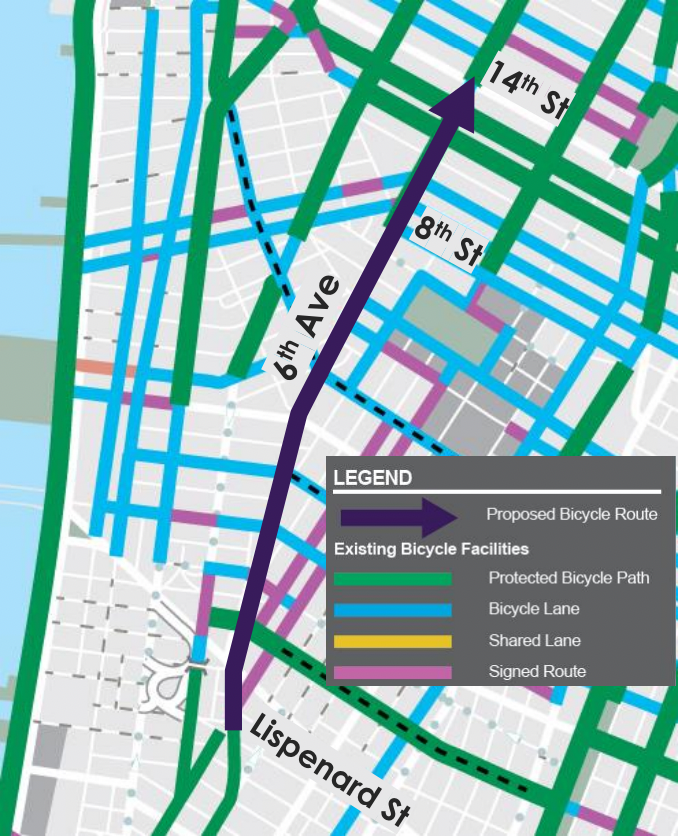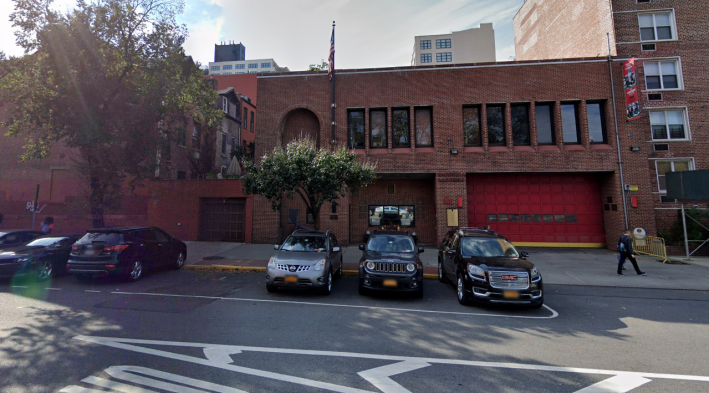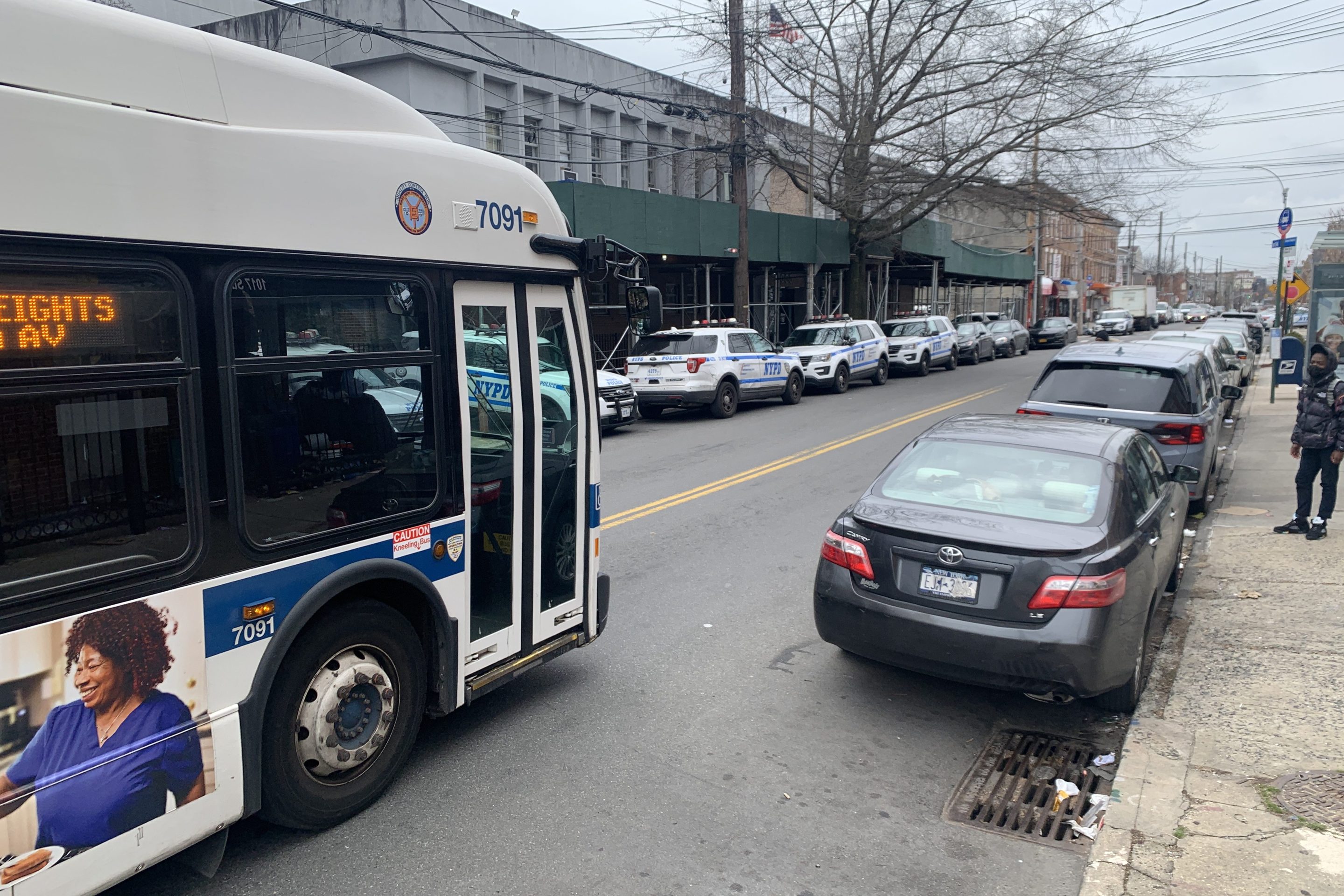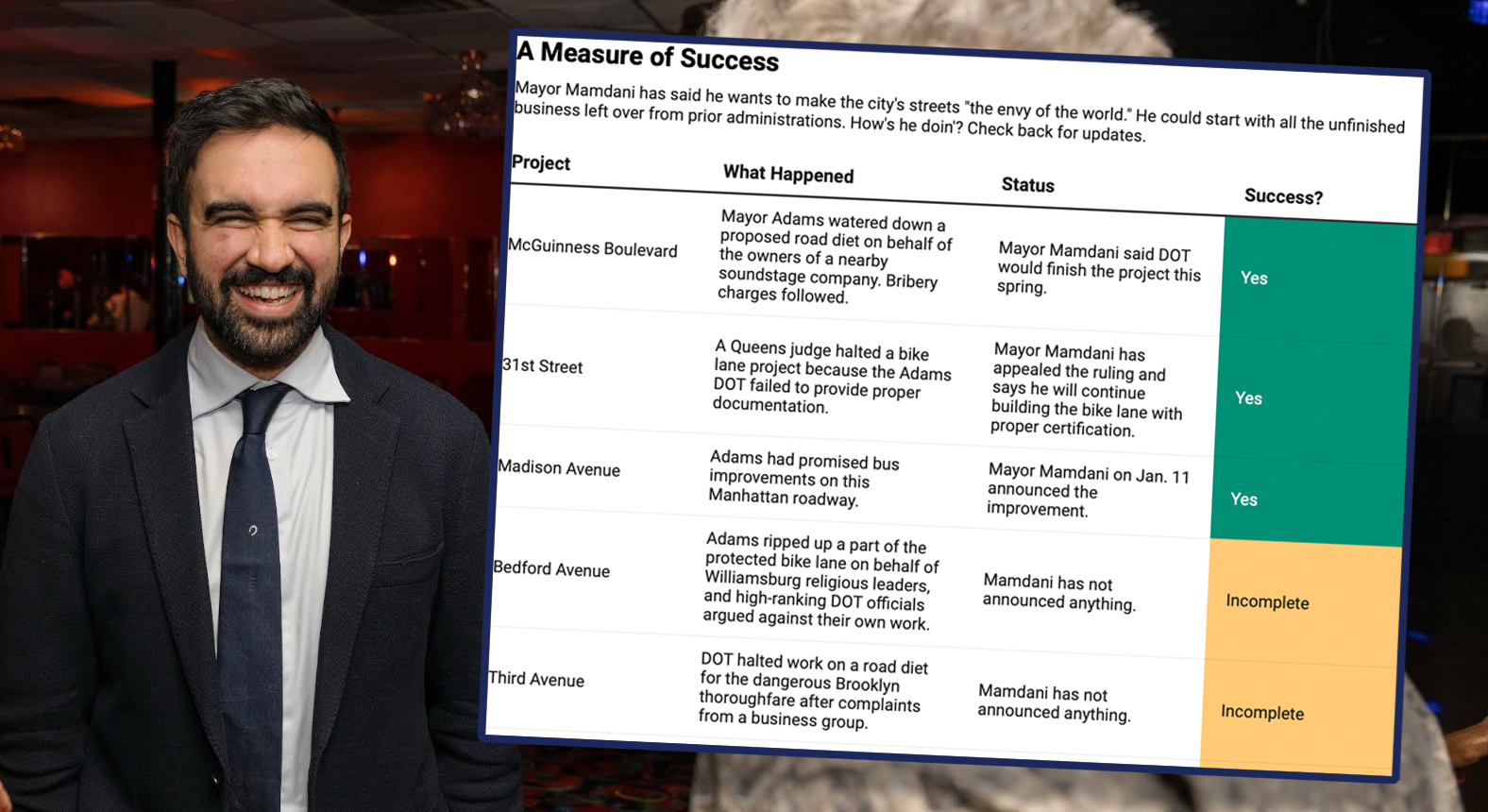The Department of Transportation plans to fill in more than a mile-long gap of protected bike lanes along the Soho stretch of Sixth Avenue this year, including double-wide paths to accommodate faster riders on electric devices — but with a significant hitch.
The proposal [PDF] includes removing one of four driving lanes to make room for a new curbside protected bike lane between Lispenard and W. Eighth streets, filling a gap between existing protected bike lanes both north and south of the stretch — but DOT will also make cyclists switch sides of the street twice as a concession to heavy Holland Tunnel car traffic and to accommodate rogue parking by firefighters at a station near W. Houston Street.
"This is the last gap between the Financial District and Central Park," DOT's project manager Preston Johnson told the Community Board 2 Traffic and Transportation Committee in June.
The agency first installed a protected bike lane on Sixth Avenue between W. Eighth and 33rd streets in 2016, extending it north to Central Park in 2020, and filling in a portion south of Lispenard Street to Barclay Street in 2022.

The new uptown-bound lanes will run along the curb, largely on the west side, but they will switch to the east side of the road between Lispenard and W. Houston streets. That's to avoid conflict with left-turning drivers heading to New Jersey via the tunnel nearby, Johnson explained.
"Some of the main concerns we had when we were designing this project was just the tremendous traffic," he said.
The traffic in the area is so bad that the MTA buses have had to routinely cut their routes short during rush hour.
The daily Garden State-bound carmageddon has also been dangerous. There have been 469 reported crashes over the last five years on the entire 1.25-mile corridor of the project, — nearly two a week — injuring 187 people, including 69 pedestrians, 34 cyclists, and 84 people in cars, according to Crash Mapper.
The three intersections of Canal Street, Watts Street, and W. Houston Street were of particular concern, where drivers have injured more than 20 people each over four years, according to DOT data.
"These are heavy left turns," Johnson said. "We obviously don’t enjoy switching from one side of the street to the other, but it’s something that we’ve considered because of these turns."
The agency also put the switch back to the west side at W. Houston, despite it being a dangerous intersection, in part because firefighters combat-park illegally on that side of the road outside of a firehouse just to the south.
"[There is] the Fire Department there and their somewhat unorthodox parking habits where we’re afraid that it could really impact the bike lane," Johnson said.

However, the bike lanes will be a spacious eight feet wide for most of their length, and DOT will widen the existing paths from W. Eighth to W. 14th streets to 10 feet.
The city agency will also pedestrianize a slip lane on Sullivan Street at Watts Street, according to the plans.
The agency will also set up concrete bus boarding islands at W. Broadway, Thompson Street, Broome Street, Prince Street, and Spring Street, along with painted pedestrian islands.
Locals liked the idea of adding a bike lane and narrowing of the highway-like roadway.
"Eight years ago we did a resolution asking DOT to reduce Sixth Avenue to three travel lanes from four [so] we’re very happy that it’s finally happening," said Transportation Committee Chair Shirley Secunda at the June meeting.
Another attendee said the change would vastly improve his commute.
"I’m very excited about this plan," said the speaker, who did not say his name. "I’m an NYU student and I regularly bike back to the Upper West Side using Sixth Avenue.
"Knowing that the entire ride — at least to Central Park — would be protected is something that I know would make me a lot more comfortable," he added.






